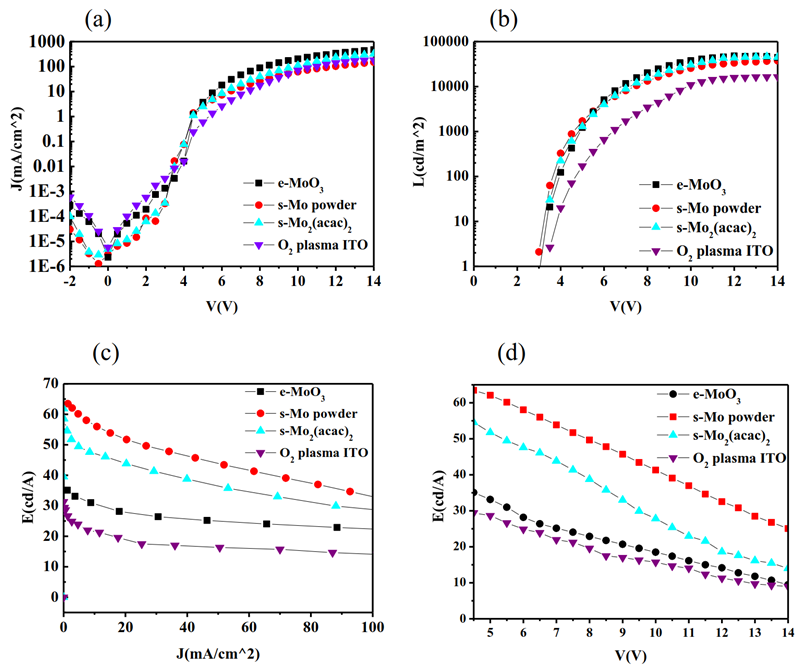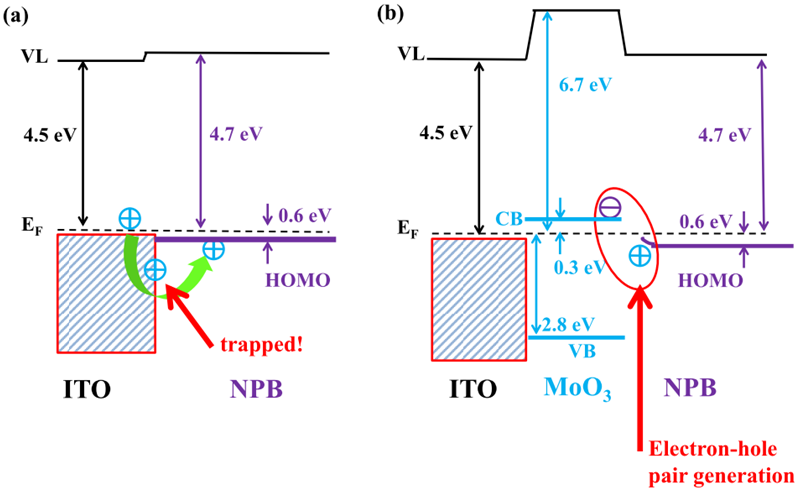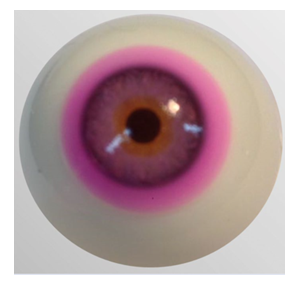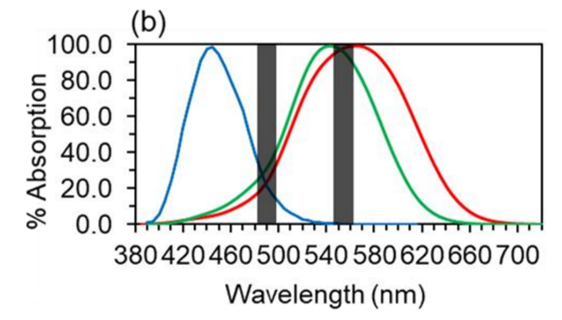 |
|
 |
| |
發行人:林恭如所長 編輯委員:李翔傑教授 主編:林筱文 發行日期:2018.08.30 |
| |
|
 |
|
 本所曾雪峰教授獲選為「2022年高登生醫光學研討會The Gordon Research Conferences (GRC): Lasers in Medicine and Biology (LMB)」主席,特此恭賀!
本所曾雪峰教授獲選為「2022年高登生醫光學研討會The Gordon Research Conferences (GRC): Lasers in Medicine and Biology (LMB)」主席,特此恭賀!
此世界頂尖生醫光學雙年會向來只邀請優秀研究員,而曾教授和眾多歐美學者經三輪激烈投票後勝出,成為自1965年創會以來首位亞洲地區遴選主席。
LMB網頁
曾教授母校西北大學電機系官網報導
臺大Facebook專訪
|
|
 |
|
 |
|
| |
|
 |
Powerful LED-based train headlight optimized for energy savings
Professor Guo-Dung J. Su's laboratory
Graduate Institute of Photonics and
Optoelectronics, National Taiwan University
臺灣大學光電所 蘇國棟教授
A new LED-based train headlight that uses a tenth of the energy required for headlights using conventional light sources has been designed. If operated 8 hours every day, the electricity savings of the new design would reduce emissions of the greenhouse gas carbon dioxide by about 152 kilograms per year.
Train headlights not only illuminate the tracks ahead, they also play an important role in rail transportation. Because trains are difficult to stop, the headlights must be visible from a distance far enough away to give people or vehicles on the tracks ample time to move out of the way. Traditional train headlights, which use incandescent or halogen bulbs, are bright enough to meet safety regulations but are not very energy efficient because most of the energy powering the light is converted into heat rather than visible light.
We were approached by the engineering and design company Lab H2 Inc., to design locomotive headlights that use LEDs as a light source. In addition to requiring less energy, LEDs also last longer and are smaller and more rugged than traditional light sources.
|

|
|
Fig. 1 new train headlight design uses two half-circular parabolic, or cup-shaped, aluminized reflectors with high-efficiency LEDs placed in the plane where the two reflectors come together. Combining the strong beams from each reflector generates the light intensity necessary to meet safety guidelines. Image Credit: Wei-Lun Liang, National Taiwan University. |
Transient carrier trapping effect in organic light-emitting diode
Professor Jiun-Haw Lee
Graduate Institute of Photonics and
Optoelectronics, National Taiwan University
臺灣大學光電所 李君浩教授
Transient carrier trapping and de-trapping effect in an organic light-emitting diode (OLED) was studied under different voltage waveforms. As shown in Fig. 1 (a), with 1-kHz voltage pulse at 6 V during on-period of 30
μs and different reverse bias (0 V to -14 V) during the off-period (970 μs), the luminance increased with increasing reverse bias up to 36% due to the trapping effect of positive charge at the cathode and the electron transporting layer (ETL), which was proved by the shift of threshold voltage (Vth) in displacement current measurement with different driving waveforms, as shown in Fig. 1 (b).
|


|
|
Fig. 1. (a) Transient luminance responses with different reverse bias under the off-period. (b) Injection trace from -2 V to 4.5 V of displacement current measurement with different waveforms. |
|
 |
| |
|
|
|
 |
|
| |
|
 |
論文題目:有機發光二極體中載子的傳輸機制研究
姓名:劉家偉 指導教授:吳志毅教授
| 摘要 |
|
本論文是關於有機發光二極體的研究,分成四個部分,主要是有關於電洞注入層與電子傳輸層方面。首先是利用自組裝氧化鉬作為電洞注入層的研究,如圖一所示。我們發現這種自組裝的方法比起傳統的熱蒸鍍更能有效提升有機發光二極體元件的效率。第二部分是將氧化鉬鑲嵌在硫化鉬的奈米溶液利用旋轉塗佈在陽極基板上做為電洞注入層,我們發現此種氧化鉬硫化鉬的合成材料能有效提高原本功函數不高的硫化鉬且能同時保持硫化鉬的導電性。第三部分則是研究不同電子傳輸層對於磷光發光元件性能的影響,我們發現電子傳輸層對於效率和壽命的影響是成反比關係,但是如果能進一步的使用雙層電子傳輸層結構的話則可以選擇適合的電子傳輸層搭配以達到效率和壽命取捨的最佳化。最後第四部份則是分析不同電洞傳輸層的能階位置對元件壽命的影響,我們發現使用具有深層價帶能帶結構的電子傳輸層能有效的提高元件壽命。我們推測其原因在於因其導帶十分接近元件的費米能階進而產生了不同的傳輸機制使得電荷能避免受到陽極與有機材料間缺陷的影響,如圖二所示。
 |
|
圖一 |
|
 |
|
圖二 |
|
|
|
 |
|
 |
|
| |
|
 |
—
資料提供:影像顯示科技知識平台 (DTKP, Display Technology
Knowledge Platform) —
—
整理:林晃巖教授、孟慶棠 —
消除色盲
用具有合適窄帶吸收的染料塗佈於隱形眼鏡可幫助色盲的人更能好好地區分色彩。這是來自正在開始找尋臨床試驗與將方法申請專利之英國伯明罕大學研究員的發現(Adv. Healthcare Mater.
https://doi.org/10.1002/adhm.201800152; in the press)。
Haider Butt和他的團隊藉由浸漬或滴式處理,將市售的螢光羅丹明染料(來自Sigma-Aldrich的Atto 565)添加到自製的聚酯纖維(2-羥乙基甲基丙烯酸酯)表面和市售有機矽隱形眼鏡的表面(如圖一)。該染料在波長545和575奈米之間有強烈吸收且在565奈米處有最高吸收(如圖二),相對應於經歷紅綠色盲的區域。這個概念是濾除這個重疊的波長帶應該有助於改善色彩的感知。這種方法已經被證明於市售的有色眼鏡,但現在這個想法被應用於隱形眼鏡。Butt解釋說:「有幾家公司已經開始銷售色盲患者的眼鏡,並且在他們提出隱形眼鏡之前與時間賽跑。」
 |
|
圖一、市售的螢光羅丹明染料(來自Sigma-Aldrich的Atto 565)添加到自製的聚酯纖維(2-羥乙基甲基丙烯酸酯)表面和市售有機矽隱形眼鏡的表面。 |
|
 |
|
圖二、染料吸收頻譜 |
在這項最新的研究中,20名視力正常的志願者和50名最普遍的紅綠色盲者,被要求利用染色過的隱形眼鏡看著一系列石原試驗幻燈片(標準色盲試驗)。然後要求他們評論它如何改變他們對測試幻燈片的看法。所有參與者,包括視力正常的參與者都有改善,但改善的程度因人而異,尤其是針對那些有色盲的人。
受到這個結果的刺激,Butt的團隊現在正在開始臨床試驗,並正在與合作夥伴進行討論,以實現該想法的商業化。「我們剛剛獲得了該研究的道德批准並很快地開始試用,」 Butt評論道,「商業夥伴(Johnson&Johnson)和伯明罕大學商業部門之間正在進行討論。我們希望該計畫的下一階段涉及將商業隱形眼鏡上的染料進行交互聯結且獲得專利保護。」
Butt的研究已經藉由將染色隱形眼鏡浸入人角膜上皮細胞和人角膜成纖維細胞的培養物中來測試其生物相容性。在兩種情況下,沒有觀察到毒性跡象且72小時後,99%的細胞仍然存活。
現在著手於使用其它染料來幫助解決紅綠色盲外的色盲缺陷。Butt說:「我們發現一些羅丹明染料的衍生物可以活躍地吸收480奈米附近的波長帶並可用於製造紫藍色盲的鏡片。我們現在正在生產用於紫藍色盲的鏡片,並且還將多種染料整合到隱形眼鏡上,以使它們同時適用於紅綠和紫藍色盲。」
|
參考資料: |
[1] Oliver Graydon, Combating colour blindness, Nature Photonics 12, 261 (2018)
https://www.nature.com/articles/s41566-018-0173-9
DOI: 10.1038/s41566-018-0173-9
[2] Abdel‐Rahman Badawy, Muhammad Umair Hassan, Mohamed Elsherif, Zubair Ahmed, Ali K. Yetisen, Haider Butt, Contact Lenses for Color Blindness,
Adv. Healthcare Mater.
https://onlinelibrary.wiley.com/doi/pdf/10.1002/adhm.201800152
DOI: 10.1002/adhm.201800152
|
| |
|
|
|
|
|
|
|
|
|
 |
|
 |
|
|
|
 |
|
 |
|